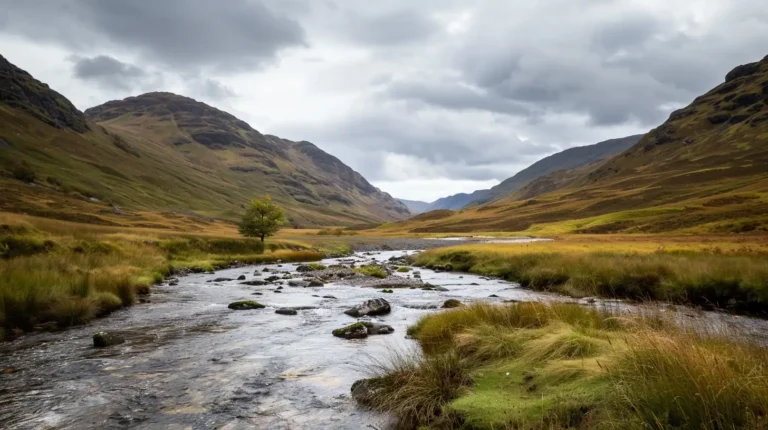Introduction: The Allure of the Open Road
There’s something undeniably thrilling about the thought of hitting the open road, windows down, music blaring, and the horizon stretching out in front of you. A cross-country road trip is not just about getting from point A to point B; it’s about the journey itself—the discoveries, the unexpected detours, and the stories you’ll gather along the way. But as romantic as the idea sounds, such an adventure requires meticulous planning. This isn’t just a weekend getaway; it’s a trek across diverse landscapes, cultures, and climates. With the right preparation, your cross-country trip can be as seamless as it is memorable. Here’s how to make it happen.
Choosing Your Vehicle: Your Home on Wheels
The choice of vehicle for your road trip isn’t just a practical decision—it’s one that can significantly shape your entire experience. Do you envision yourself cruising down Route 66 in a classic convertible, or does the thought of a cozy RV with all the comforts of home appeal more to you? If you’re looking at long drives through varied terrains, fuel efficiency becomes a critical factor. A hybrid or a car with excellent mileage will save you from frequent fuel stops and keep more cash in your pocket for those must-see attractions. However, if you’re planning to camp out under the stars, a rented RV might be your best bet, offering both mobility and a place to sleep, eat, and relax. Whatever you choose, ensure it’s reliable, comfortable for long stretches, and suited to the type of journey you have in mind.
Mapping Your Route: Charting the Course
A successful cross-country trip starts with a well-planned route. While the spontaneity of hitting the road with no set plans sounds adventurous, having a general path will save you from unnecessary stress. Begin by outlining your main route—are you taking the scenic highways, or do you have specific destinations in mind? Tools like Google Maps and Roadtrippers are invaluable here, helping you plot your journey with key stops at national parks, historical landmarks, and quirky roadside attractions. But don’t just stick to the main roads; explore alternate routes that might offer fewer crowds and more local charm. And always have a backup plan for road closures or unexpected delays—knowing where you can detour will keep your trip running smoothly.
Booking Accommodations: Finding Your Home Away from Home
Whether you’re a fan of luxury hotels, quaint bed-and-breakfasts, or rugged campsites, booking your accommodations in advance can save you from the frustration of sold-out rooms or fully booked campgrounds, especially during peak travel seasons. Platforms like Booking.com and Airbnb offer a range of options to suit your style and budget, from urban hotels to remote cabins. If your journey involves national parks, securing a campsite or an RV park spot ahead of time is crucial—these locations fill up fast, especially in the summer. Planning where you’ll rest each night ensures you have a safe and comfortable place to recharge, keeping your energy up for the adventures ahead.
Packing Essentials: Ready for Anything
Packing for a cross-country trip is an art. You need to be prepared for a wide range of weather conditions and geographical variations, from the sweltering heat of the desert to the crisp air of the mountains. Start with the basics: clothing layers, sturdy shoes, and a good jacket. But don’t forget the small stuff that can make a big difference—an emergency kit with a first-aid supply, spare tire, and jumper cables; entertainment options for long stretches of highway; and a well-stocked travel document holder with your ID, insurance papers, and any necessary permits. Consider the specific needs of your trip too—if you’re camping, pack cooking supplies and a tent; if you’re road tripping in the winter, snow chains might be necessary. A little foresight can turn a potential mishap into a minor hiccup.
Entertainment and Pit Stops: Keeping the Journey Fun
A cross-country trip is as much about the journey as the destination, and part of that journey includes having fun along the way. Long drives can become monotonous, so planning regular pit stops is essential. Research landmarks, national parks, and quirky roadside attractions ahead of time—places like the World’s Largest Ball of Twine or Carhenge can add a touch of whimsy to your trip. Also, consider the in-car entertainment—whether it’s a carefully curated road trip playlist, a stack of audiobooks, or car games for the kids, keeping everyone entertained will make the miles fly by. And don’t forget to stretch your legs! Planning stops at scenic overlooks or small-town diners can provide a refreshing break from the road.
Food and Dining: Savoring the Journey
One of the joys of a cross-country trip is sampling the local cuisine. From barbecue in Texas to seafood in Maine, every region has its specialties. Your travel planning should include researching local eateries and food markets where you can taste the best of what each area has to offer. Apps like Yelp can help you find top-rated spots, but don’t be afraid to ask locals for recommendations—the best meals are often found off the beaten path. If you’re on a tighter schedule or budget, packing meals for certain legs of the journey can be a smart move. A cooler stocked with snacks, sandwiches, and drinks means you’re always ready for an impromptu picnic at a scenic spot.
Navigating Challenges: Preparing for the Unexpected
No matter how well you plan, challenges can arise. Weather changes, vehicle issues, or health concerns can disrupt even the best-laid plans. That’s why it’s essential to prepare for the unexpected. Always check the weather forecast before hitting the road, especially if you’re traveling through areas prone to severe weather. Keep a list of mechanics and emergency services along your route, just in case you run into car trouble. It’s also wise to carry a basic first-aid kit and any prescription medications you might need. And don’t forget about mental preparation—long stretches of driving can be tiring, so make sure you’re well-rested before you start and take breaks as needed.
Staying Connected: Keeping in Touch on the Road
In today’s digital age, staying connected is crucial, whether it’s for navigation, keeping in touch with loved ones, or handling work while on the road. Ensure that your phone is fully charged before you set out, and invest in a portable power bank or car charger to keep your devices powered. If you’re heading into remote areas, consider a portable Wi-Fi device or a satellite phone for reliable communication. It’s also smart to download offline maps and have a physical map as a backup—technology can fail, but a good old-fashioned map won’t let you down. Staying connected also means keeping your loved ones updated on your progress and itinerary, ensuring they know where you are and can reach you in case of an emergency.
Documenting Your Journey: Capturing the Memories
A cross-country trip is an adventure filled with memories waiting to be captured. Whether you’re a photography enthusiast or just want to keep a record of your journey, documenting your trip is a great way to relive the experience later. Keep a travel journal where you can jot down your thoughts, impressions, and memorable moments. Use your smartphone or a camera to take photos and videos at each stop—these will be priceless souvenirs of your journey. If you’re active on social media, consider sharing your adventures with friends and family as you go. Not only does this keep them updated, but it also creates a digital scrapbook of your travels that you can look back on in the years to come.
Conclusion: The Road Less Traveled
A cross-country road trip is more than just a vacation—it’s a rite of passage, a journey that offers a unique perspective on the vastness and diversity of the country. With careful planning and a spirit of adventure, you can turn a daunting task into a smooth, enjoyable experience. From choosing the right vehicle to navigating unexpected challenges, every aspect of your trip can be tailored to create memories that will last a lifetime. So, grab your map, pack your bags, and get ready to hit the open road—adventure awaits.
TL;DR: Key Points for Planning a Cross Country Trip
When planning a cross-country adventure, choose a comfortable and reliable vehicle, map your route in advance, book accommodations early, pack essentials, and plan for entertainment and dining. Always be prepared for unexpected challenges and find ways to document and share your journey.
Further Reading
For additional resources and detailed guides on cross-country travel, visit websites such as
- Roadtrippers – Plan cross-country road trips with ease.
- America’s Byways – Explore scenic byways and routes across the U.S.
- Cross Country Travel – Tips and guides for planning cross-country journeys.
FAQ Section
What is the best time of year to go on a cross-country road trip?
Spring and fall are generally the best times to avoid extreme weather conditions and heavy traffic associated with summer holidays and winter snow.
How much does a cross-country road trip cost?
Costs can vary widely based on factors like your vehicle, where you stay, how much you dine out, and what activities you plan. Budgeting carefully and planning for expenses can help manage costs effectively.
What are the best safety tips for a long road trip?
Ensure your vehicle is in good condition, keep a roadside emergency kit, stay rested, and regularly check weather and road conditions.
Closing Remarks
Thank you for exploring these tips and strategies for planning a successful cross-country trip. With careful preparation and a spirit of adventure, you’re set for an unforgettable travel experience. Safe travels!




